Intel Optane is a game-changing technology. If you are looking for high-performance non-volatile storage, Intel Optane is simply top in the marketplace right now. The Intel Optane 800P m.2 SSDs come in 58GB and 118GB varieties. Although Intel is careful to state this is a different product line than 2017’s Optane Memory m.2 modules, it is not an enormous logical leap to see the 800P as a strong successor to last year’s product. At the same time, we have some reservations once you get away from the performance aspects of the new SSDs.
Intel Optane 800P Overview
Intel sent us two flavors of the Intel Optane 800P drives, the 58GB and 118GB versions of the drives.
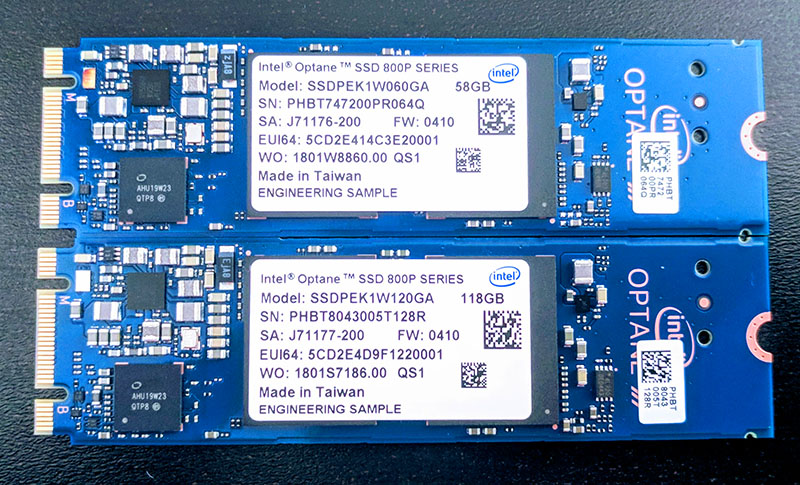
As you can see, these are in a standard M.2 2280 form factor. Unlike many NAND based NVMe drives, these utilize a PCIe 3.0 x2 interface instead of a PCIe x4 interface. Pricing is $129 for the 58GB and $199 for the 118GB SSDs.
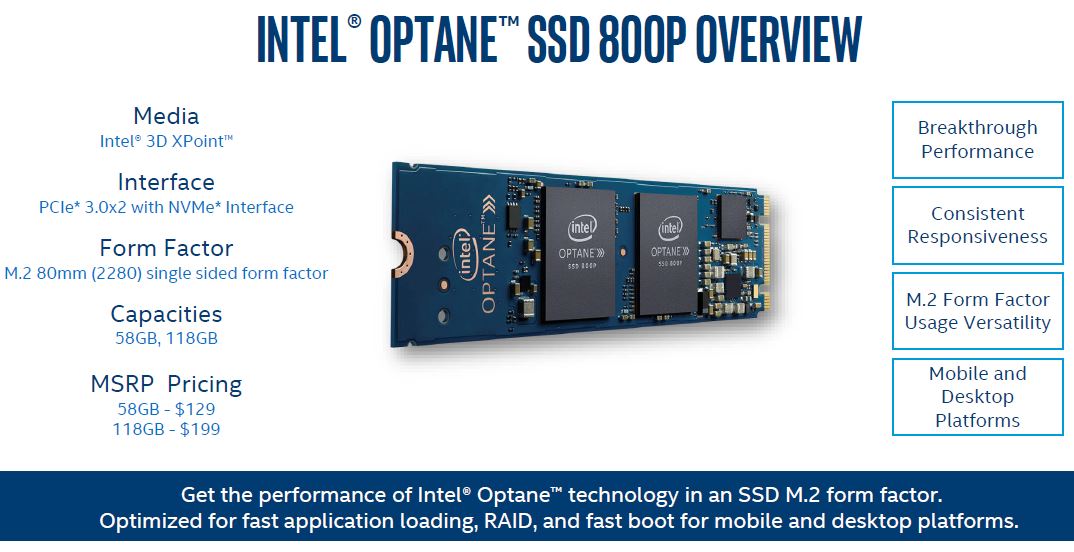
The modules themselves are single sided for both capacity points which aids in cooling.
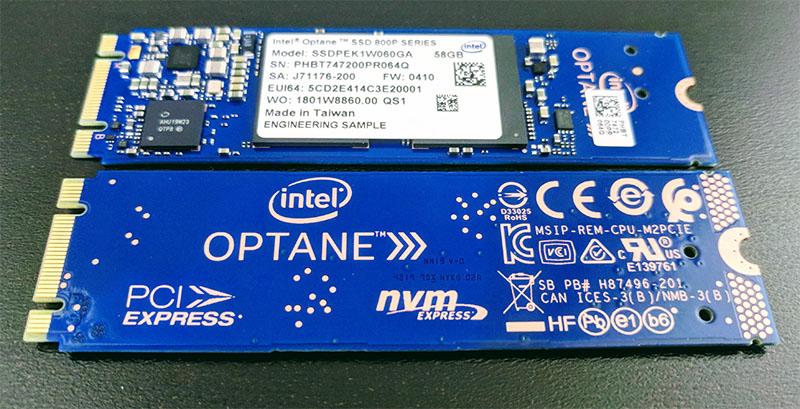
The drives slot in between the smaller Intel Optane Memory product and the higher-end Intel Optane 900P product that does not currently come in an M.2 form factor but uses a full PCIe 3.0 x4 interface.
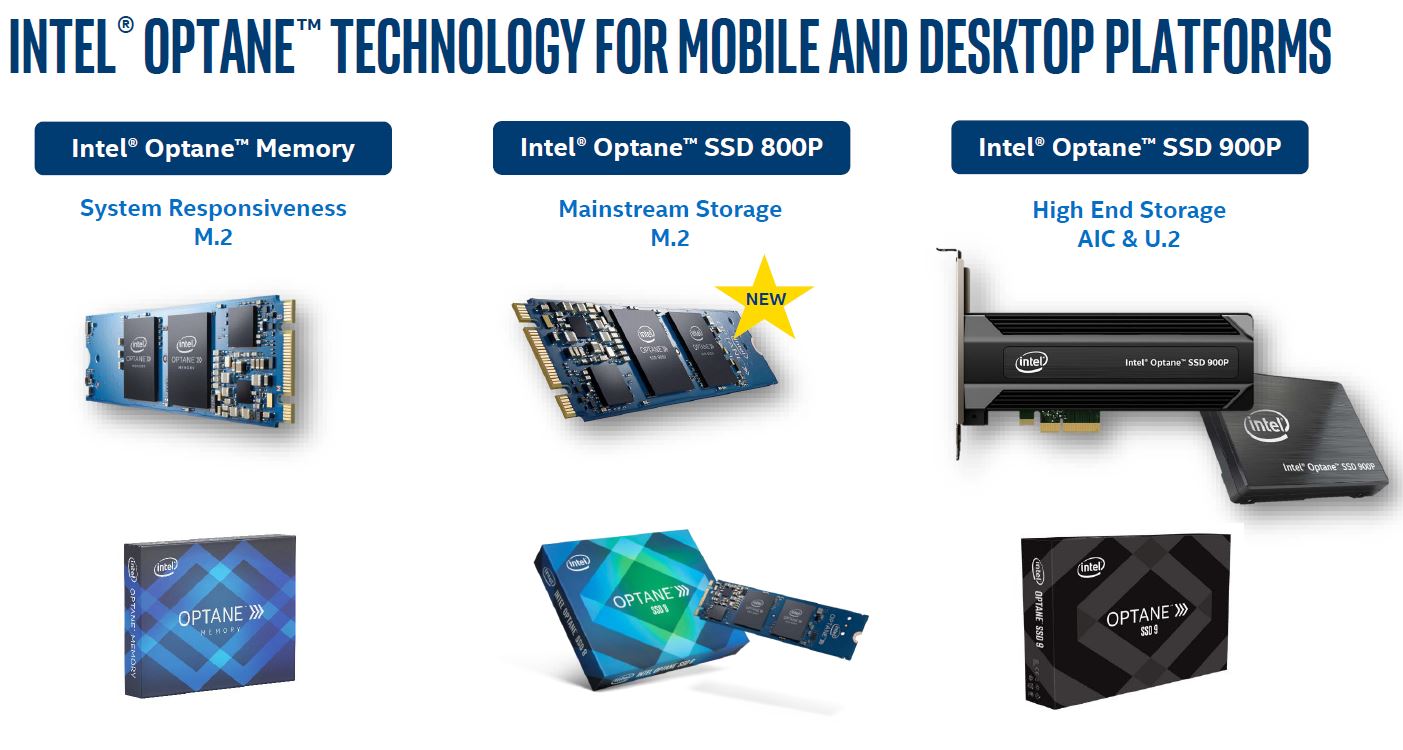
Although Intel positions the 800P as a higher-end product over the Intel Optane Memory line, it is somewhat reasonable to view it as a bigger, faster and more expensive version of the lower-end product. Indeed, Intel went the extra effort to show how it views this as a different use case scenario as the Optane Memory product:
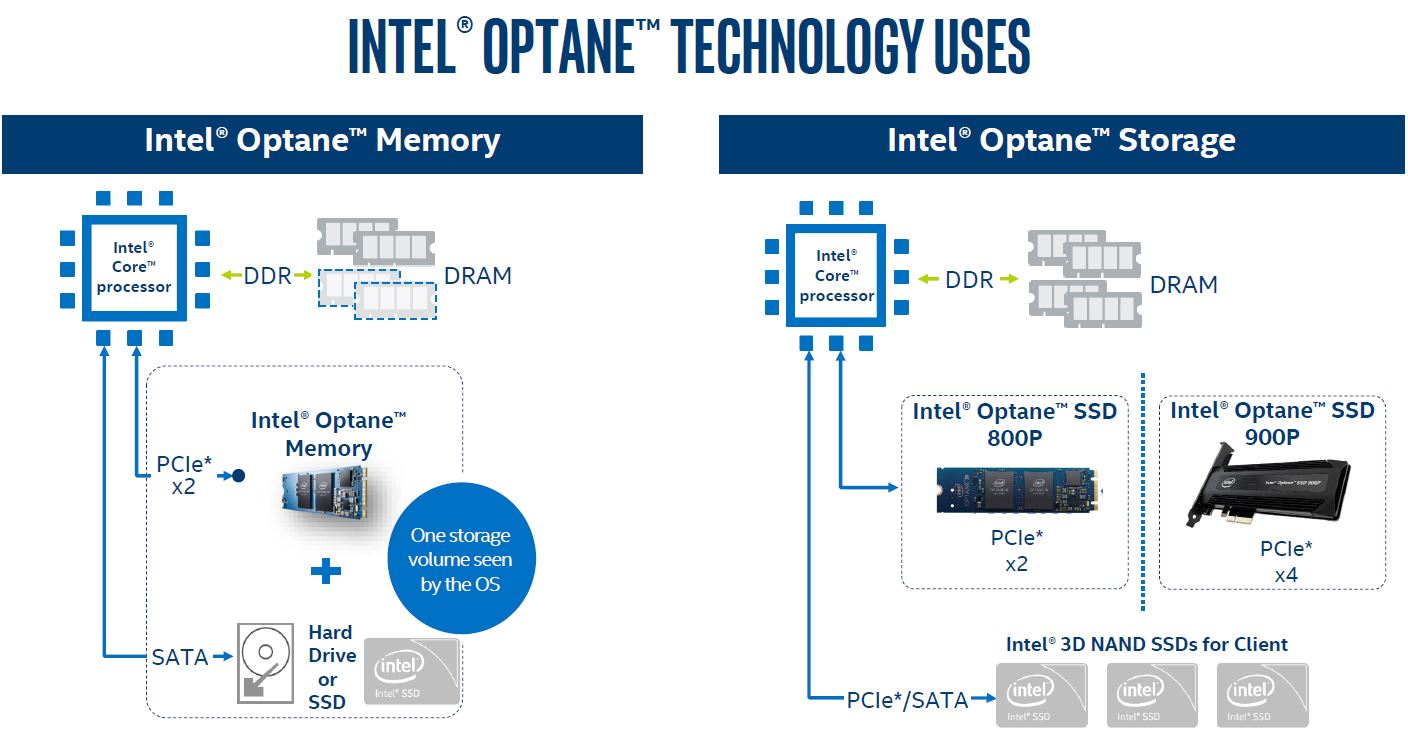
Intel positions Optane Memory as a cache device while the Intel Optane 800P and 900P drives are seen as primary storage drives and OS drives.
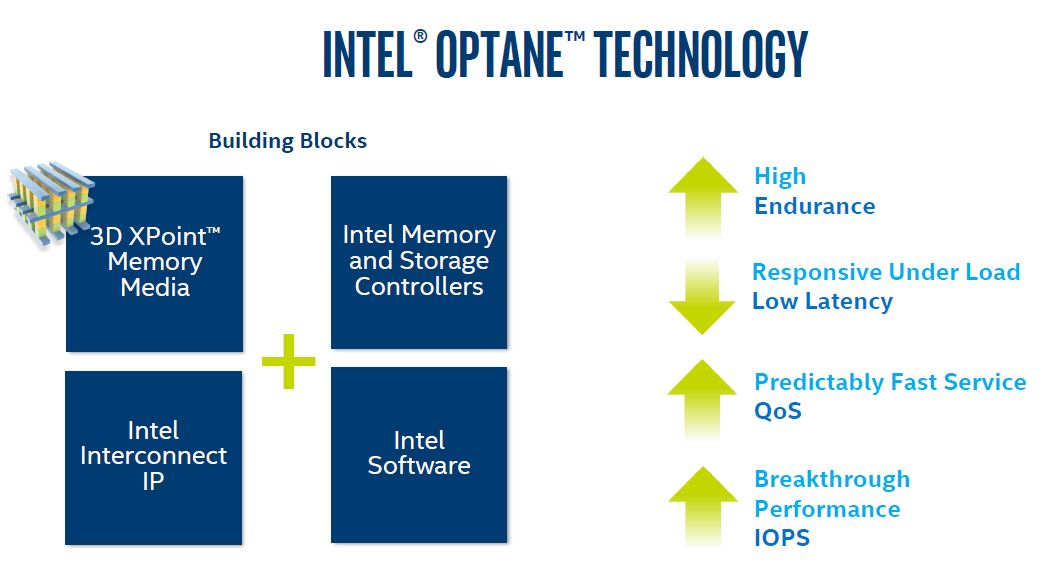
Key to the Intel Optane technology is that it is a non-volatile storage medium (like NAND) but has better latency, low queue depth performance, and QoS characteristics than traditional NAND SSDs.
The Optane Advantage for Random Performance
The key item Intel is missing in this list for STH readers is that this does not require a DRAM cache. That helps to keep BOM costs down but it has another impact, it means that writes to the drive are direct to the medium. This means that sync writes to the drive do not pass through an on-drive RAM cache. If the power fails, a sync write to Optane will be safer than a sync write to NAND.
The other benefit of the addressability of the Optane storage, and one of the reasons it can get away with no onboard RAM cache, is that it does not have a program-erase (P/E) penalty of typical NAND SSDs.
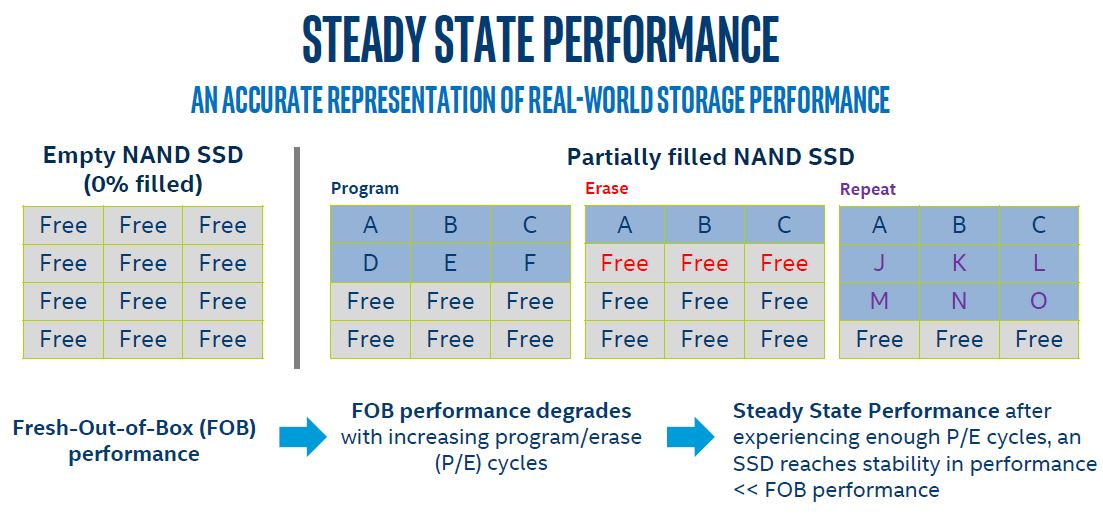
That means that steady-state storage, even on consumer Optane is excellent.
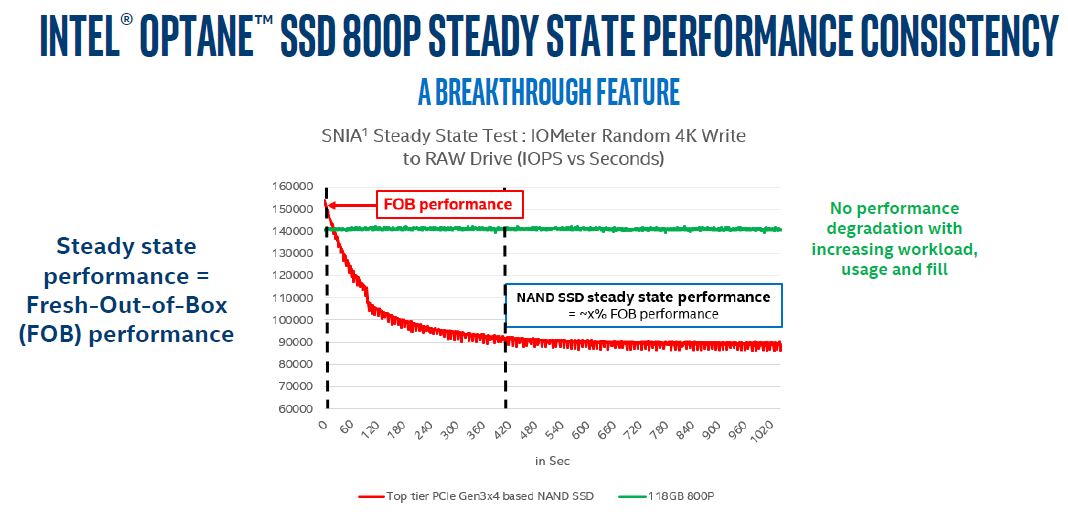
When you compare Optane to enterprise SSDs, generally enterprise drives have much flatter steady state performance than consumer drives, but with NAND SSDs that requires a concert of spare capacity, firmware optimization, RAM caching, and power-loss protection circuitry to make that work well. With Optane, the storage medium is essentially designed for this type of workload.
The one concern we have with this chart by Intel is that it is essentially useless. With 375TB of write endurance applications doing 4K random writes to the Intel Optane 800P modules will quickly exceed endurance ratings. For the 900P and P4800X, this makes a lot of sense. Likewise, if you are using a consumer NAND drive for a sustained 4K random write workload, you designed your machine incorrectly. Most consumer platforms have enough time to work through P/E cycles during garbage collection/ TRIM these days.
Intel Optane Low Queue Depth Performance
During Intel’s press presentation, the company had a really interesting discussion on real-world desktop application traces and queue depth. We generally shy away from PCMark workloads but here is a great chart showing some common applications:
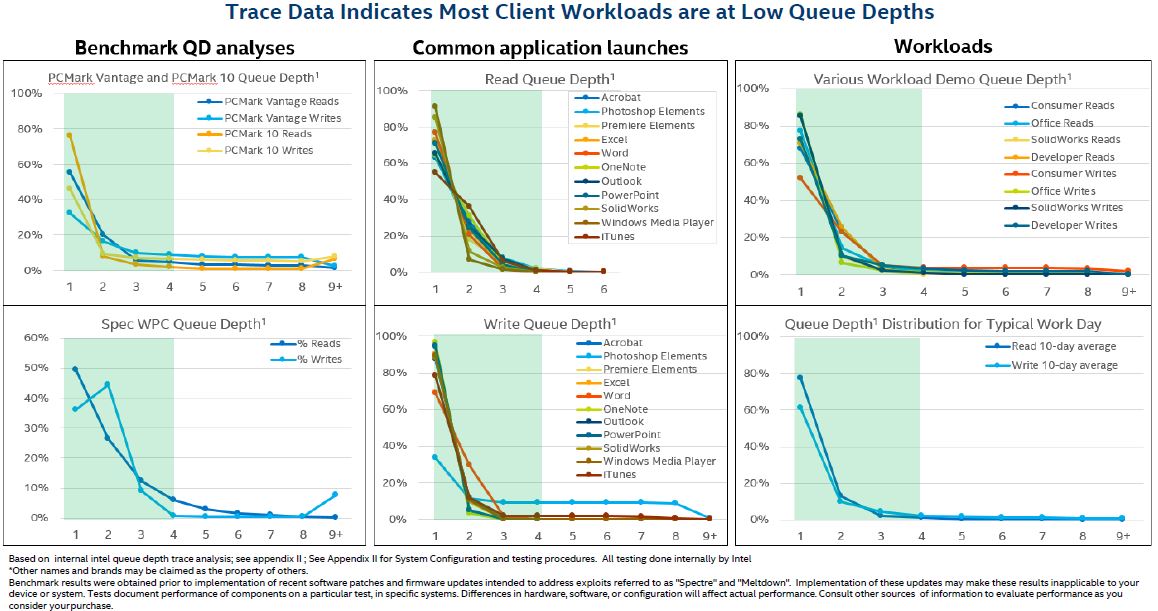
Two key points to note. First, the majority of workloads are sub QD4. When you see most NAND SSDs focus on QD32-256 performance. Intel’s thrust here is that Optane is the first non-volatile storage solution that does not require the same high QD figures to get this type of performance. It is also showing that QD4 and below is where one needs performance for desktop workloads.
What that really does is set up showing low QD advantages of Optane over NAND SSDs:
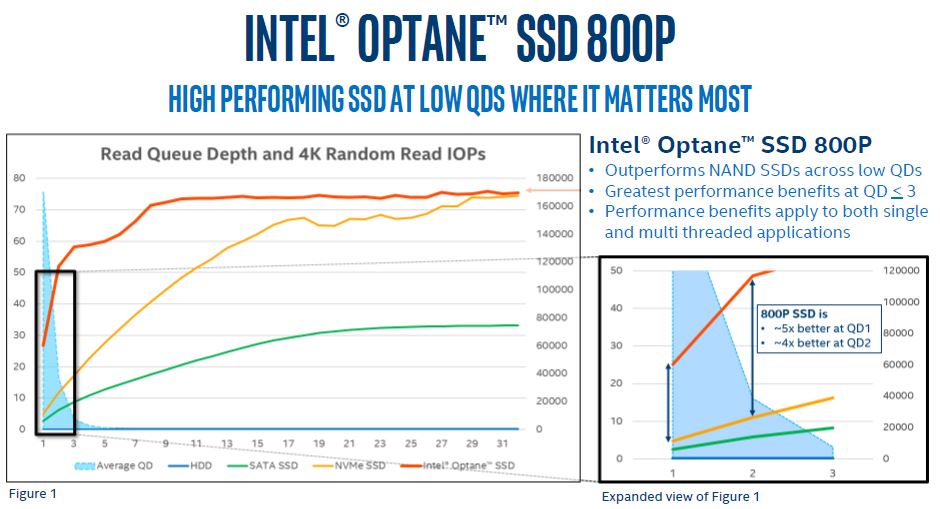
Again, an application that has sustained and heavy 4K random read access patterns are relatively rare in the desktop space. If you look to web server read patterns, you can see abundant heavy read patterns.
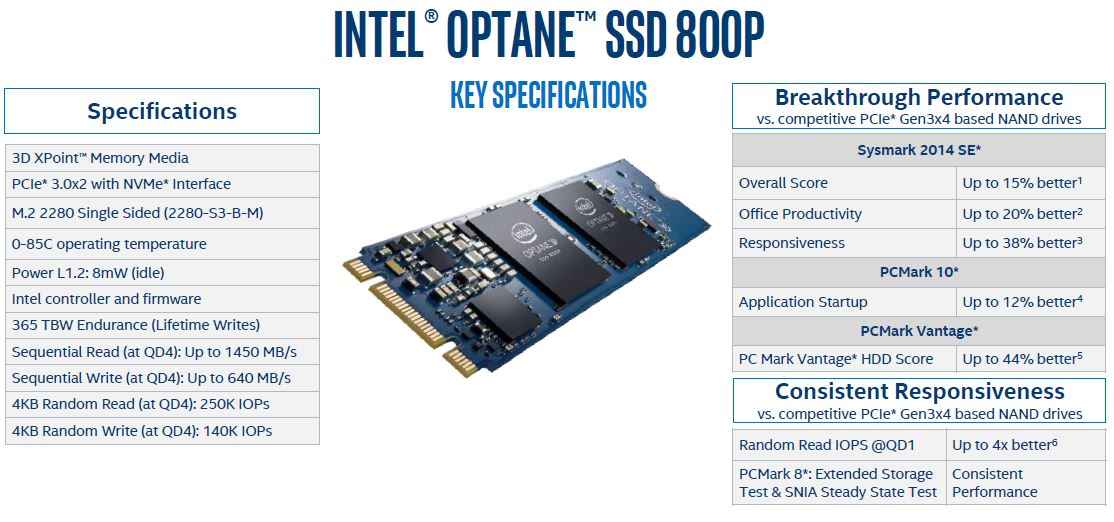
The key specs in terms of sequential read are 1.45GB/s at QD4, write 640MB/s at QD4. Likewise, the standard 4K random read/write are given in QD4 at 250K IOPS and 140K IOPS respectively. Essentially a $199 118GB SSD will likely blow away your expensive hard drive and early SATA/ SAS SAN from a few years ago in terms of performance. QD4 is a much more representative way to show consumer drive performance and not one that competitors like Samsung want to share on the NAND SSD side.
Note: We are not going to discuss Intel’s sequential read latency spec here as it is not a great metric, but Optane latency is very good.
Our Reservations on the Intel Optane 800P
There is a gigantic elephant in the room with the Intel Optane 800P that one should have seen in our title: capacity. The primary reason my personal workstation uses enterprise NAND-based SSDs and my laptop uses NAND based SSDs is not because they are better. Instead, it is because Optane capacity is still too small in these types of form factors. The Intel Optane 900P starting at 280GB was the first drive that had objectively useful capacities. At 58GB or 118GB users that want performance need to make a tradeoff since most OS and application drives are going to be larger than 118GB.
Intel clearly addressed this saying, suggesting one can use the drive as an OS disk, or use RAID. We have a number of reservations about this diagram.

First, if you use Optane for PCIe boot, it is the case that you will boot faster. We have some data on this that we will share in our performance piece. At the same time, boot media is a chase to the lowest value storage possible. If you look at servers, companies like Dell EMC are not pushing high-end boot drive options. Instead, they are pushing SD cards, USB keys, SATA DOMs or more recently the Dell EMC BOSS card with two SATA SSDs we saw in our Dell PowerEdge R640 review.
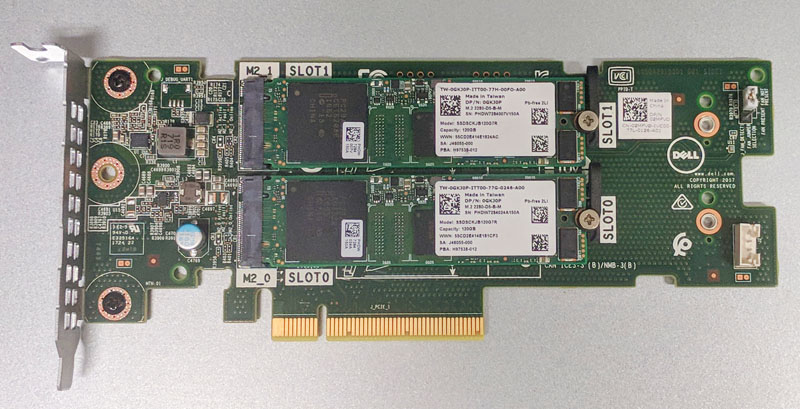
The bottom line here is that if a $40,000+ server is going out of its way to use less expensive boot media, high-performance low capacity OS boot drives are a hard sell.
Intel’s alternative was using RAID 0 with the Intel 800P. If you RAID 1 the SSDs you get redundancy but you get slightly worse performance. Again, we have data in our performance piece coming. If you RAID 0 the 118GB SSDs, you now have additional points of failure and you run into a logical issue. Why spend $199x 2 = $398 on two Optane 800P drives over spending slightly less on a 280GB Optane 900P with an M.2 adapter? The 900P offers 280GB versus 236GB so you get over 17% better $/GB going with the 900P over a RAID 0 Optane 800P setup, you lower complexity by eliminating RAID, and you get higher reliability and endurance at essentially the same price point.
With these reservations aside, the Intel Optane 800P is a drive we really like, and we are going to show why in our performance piece.
Final Words
For those looking for some of our innovative benchmarking using Optane, get ready, that is in a follow-up performance piece. The Intel 800P is simply a needed product in the market as Optane Memory is essentially too small. Adding higher capacity options is what we believe the Intel NVM group needs to focus on as that will open the door to more applications. For the consumer side, this can be a great accelerator, but it is a harder niche to find those looking to either have a very small high-performance drive for a small number of applications. If you have workloads, for example taking advantage of Windows 10’s Hyper-V features, VMware Workstation, or are using technologies like Docker for Windows, the Intel Optane 800P is going to be exceedingly “lustworthy.”
Part of STH’s platform with DemoEval is that we want to let STH readers on the latest technology. Since we knew Intel was releasing the Optane 800P today, we switched the STH forums database instances to all run on the Intel Optane 900P drives in the data center. If you want to use Optane on 8 March 2018, head over to the STH forums and you can tell friends and co-workers you used Optane today from your web browser.

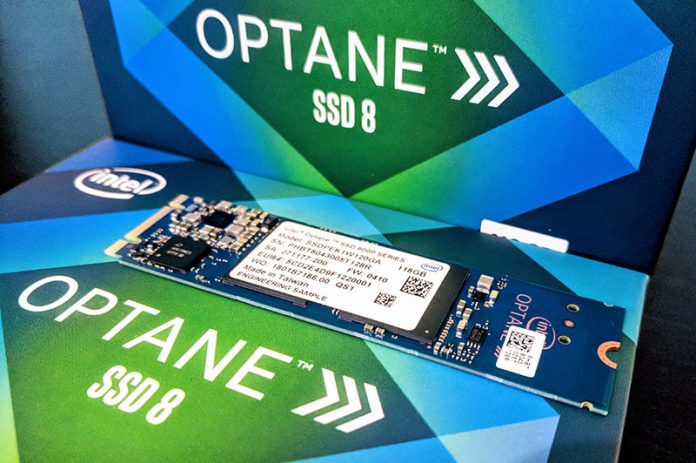



“using technologies like Docker for Windows, the Intel Optane 800P is going to be exceedingly lustworth”
This has my attention. Does windows do Docker differently then Linux? Would Linux benefit form the same lustworthyness and would that also extend to container technologies in general? Some qualification on this would e awesome.
Michael – Linux would too, of course. That is just an example use case. Launching docker containers from local images on Optane storage is very fast.